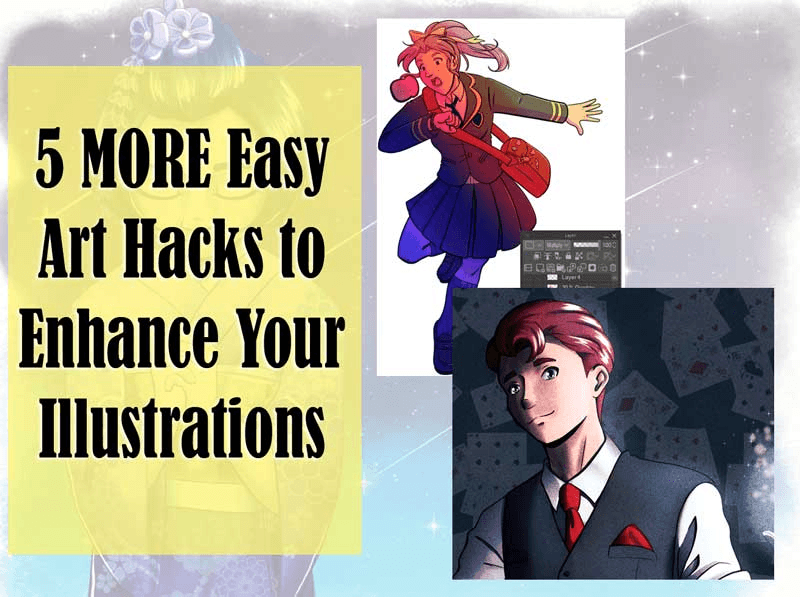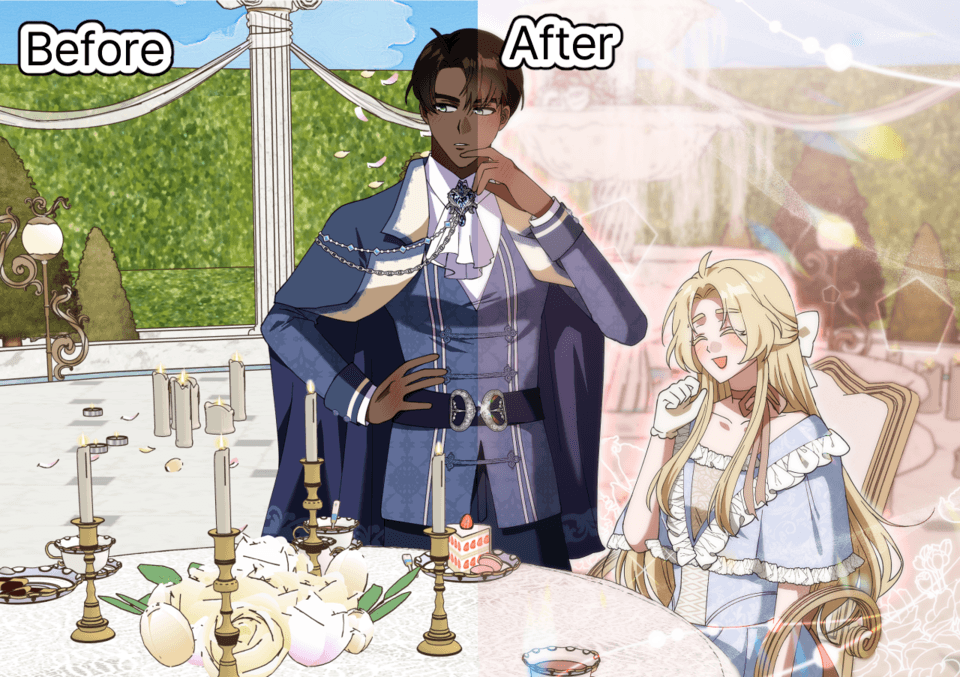Movie poster-like ideas
This is a collection of ideas for creating movie poster-like images.
If you can draw a high-quality, skilled picture, it seems like you could make it look like a movie poster just by adding text, but honestly, that's the hardest part.
So this time, we'll explore other elements to make it look like a poster.
The width and height of posters seem to vary slightly depending on the country, but I think it will look reasonable if you keep the aspect ratio close to that of regular printing paper.
The title is big
The title must be easy to read. People won't buy a ticket if they can't read the title.
The easiest thing to do is to make the title the largest font size. If there is other text, such as promotional text or credits, make sure the font size is different. (This is sometimes referred to as a "high jump rate.")
The image on the right has a higher jump rate than the image on the left, making it easy to see at a glance which one is the title.
There are some great posters out there that don't follow this rule, but let's stick to the basics for now.
Putting some thought into the title logo
Applying a special style just to the title gives it a special feel, making it easier to tell that it's a title.
In addition to changing the font, you can also make it look like a title logo with just a little processing. If the logo looks like it, it may not be a problem even if the font jump rate is low.
Here are some processing ideas.
Cool dirty processing
① Create text in white → Rasterize
② Pay attention to the triangle and erase the text with an eraser at 100% opacity
③ Select a transparent color and erase with the "Airbrush > Splash" brush or "Pastel" brush
I used a brush this time, but you can also use it to add grunge textures by clipping them.
Pop border
① Create text in white
② Layer effects > Border effects > Border Add a thick black border
③ Copy the bordered layer and fill the bottom layer with black. Shift the position downwards to make it look like a shadow has been cast.
Transform tools
Prepare text and rasterize it
A: Edit > Transform > Perspective Distortion, narrow the bottom edge
B: Edit > Transform > Mesh Transform > Set horizontal grid points to 4, vertical grid points to 2 > Select the grid points in the red part of the image and move them down (multiple selections can be made by dragging while holding down shift)
C: Edit > Transform > Mesh Transform > Set horizontal grid points to 3, vertical grid points to 2 > Select the two grid points in the middle and shrink them up and down
Using Auto Actions
ASSETS offers many auto actions suitable for processing text. It is a good idea to look for one that can process text in a way that is close to the image of your work.
Overall Layout
Title Layout
There are many different layouts for the title and main image. Let's look at some examples.
I kept it simple and placed the main character and title in large horizontal text in the center.
Subtitles and promotional text can be placed at the bottom, or if they're in Japanese, they can be added vertically.
Placing the text at an angle gives it momentum and movement. It's also a good idea to have part of the title extend off-screen.
Also, as of CLIP STUDIO PAINT Ver. 3.0.0, it's now possible to arrange text in a circle, so you can take advantage of that. For more information on circular arrangements, see the link below.
Left: The title letters have been divided and varied in position and size. Some of the letters are placed behind the person (on the layer below).
Right: This is a method of making the title thicker and larger, and clipping the main visual to it.
In both cases, the colour of the main visual has been changed with a gradient map. This makes it easy to create a sense of unity.
For more information on clipping and gradient maps, please see the following page.
Layout using frames
The main visual is placed in a horizontal frame, with the title and other information above and below. This is common when the main focus is a human drama, or when you want to highlight the actors.
It would also be a good idea to use a hand-drawn font, or actually write the title by hand.
There are many ways to divide the frames. Try it out like dividing up the panels of a manga.
The frame doesn't have to be rectangular. Try different shapes like diamonds, circles, triangles, etc.
It can also be impressive to make the main subject jump out of the frame.
Another common technique is to use a gradient to make the characters blend in and then place the world in which the character is set behind them.
Easy to read color scheme
What can you do if the text placed on top of an image is hard to read?
Color has three elements: hue, brightness, and saturation, and visibility can be improved by making each of these different.
Here is an example of a change in hue. The position on the circumference of the color circle changes.
This is an example of changing brightness. The position of the color circle in the vertical direction changes, and the brightness of the color changes.
Here is an example of changing saturation. As the position changes horizontally on the color wheel, the vividness of the color changes.
Of the three elements above, we recommend paying attention to "brightness" first.
If you want to check the difference in brightness, try making your completed design monotone by following the steps below.
Top menu > Edit > Color correction > Hue, saturation, brightness > Reduce saturation to the maximum.
If the text is difficult to read, you may want to reconsider your color scheme.
In addition, placing colors with high saturation and similar brightness next to each other can cause a flickering phenomenon called "halation." This can be used effectively for creative purposes, but keep in mind that it generally reduces visibility.
You can avoid this phenomenon by simply adding white and black borders to the text, and it is also recommended to change the brightness and saturation.
Other elements
If the movie has won any awards, the poster may highlight this.
Let's say it won a fictitious award.
It would also be appropriate to include the movie's release date.
























Comment